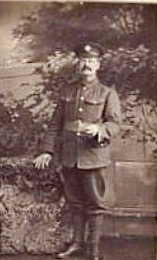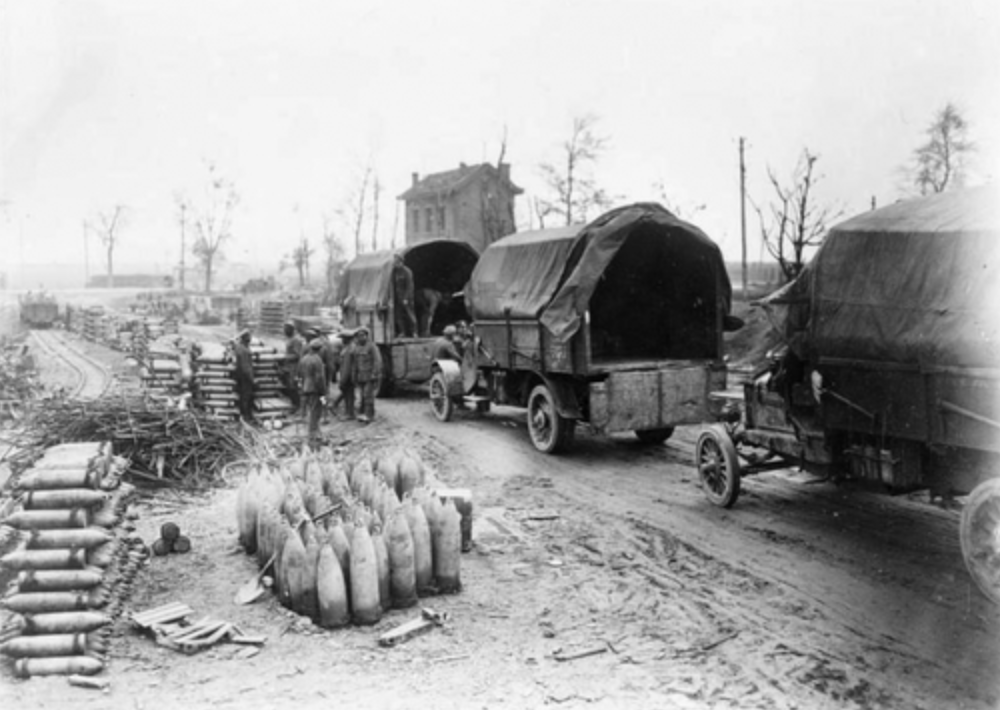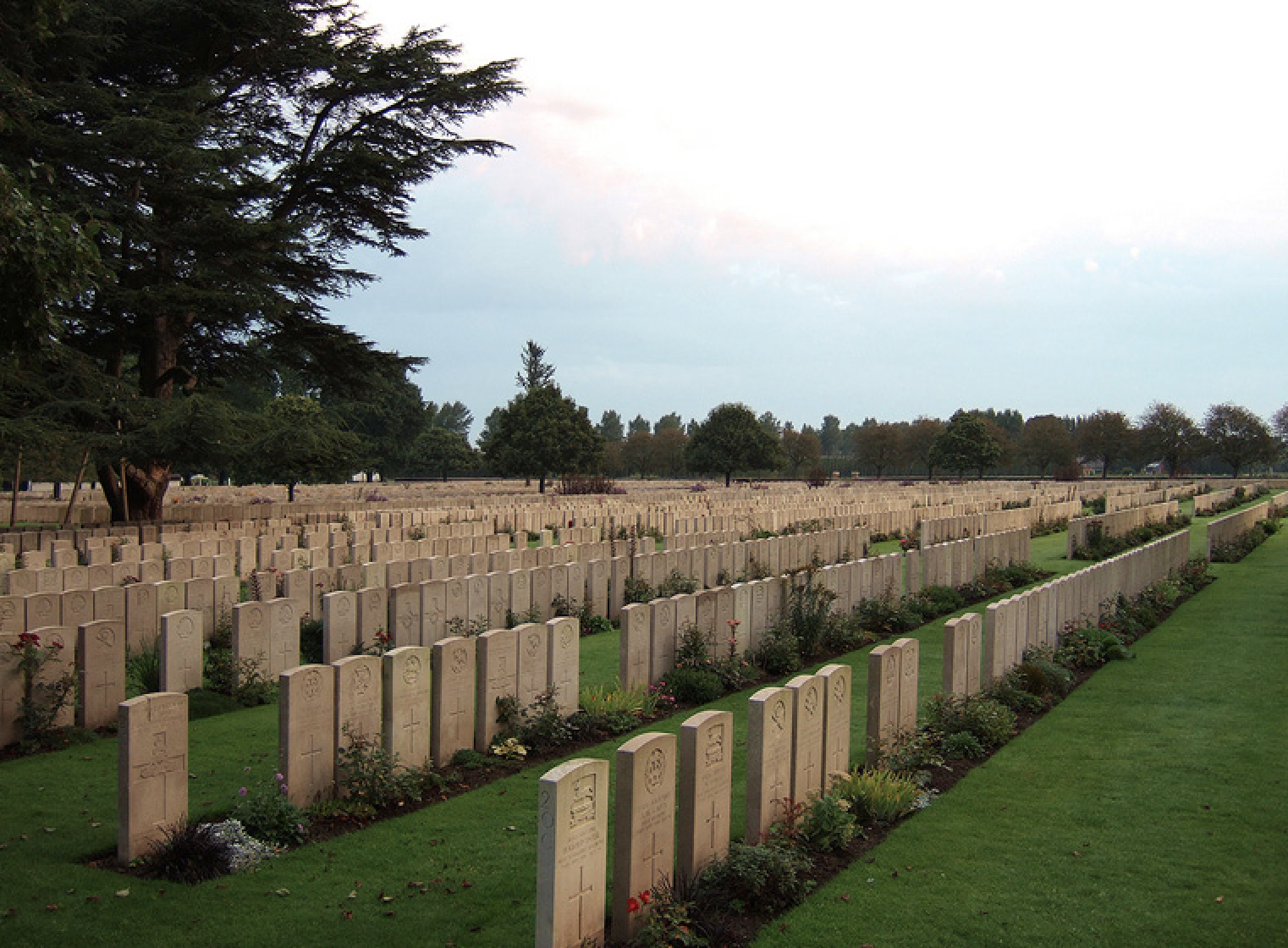Fallen in January 1918:
William Walter Sears
Alfred Blakie
WILLIAM WALTER SEARS
121303 Sapper
9th Field Service Coy., Royal Engineers
Died of Illness Tuesday, 1st January 1918
Remembered with Honour, Hemel Hempstead and Leverstock Green War Memorials, Hertfordshire, England.
William Walter Sears was born in Leverstock Green, Hertfordshire in early 1862 and baptised on Friday, 4th April at Holy Trinity Church in the village in the same year. He was the second child and first son born to William Sears and Eliza Edmonds who had five children together who were: Annie, William, Elizabeth, Sarah and Alfred.
When William was ten-years-old in 1873, his family moved to Hornsey in North London, leaving him with his Grandmother Sarah, at Highfield Cottages near Yew Tree Farm on High Street Green in Hemel Hempstead. William was still there at the time of the 1881 census and it was around this time that he met his first wife Emma Cull.
Emma was from Paddington, west London and she had come to work as a ‘Laundry Maid’ at Highfield House, home of Annie Heale and her family. Emma had probably worked for the Heales when they lived in London and come with them when they moved to Highfield. She was one of six servants in this substantial household, and working alongside her as a ‘housemaid’, was Sarah Dell whose brother James lived next door to William at Highfield Cottages.
Perhaps they met when Sarah and Emma paid a visit, but they soon became sweethearts and in 1883, William and Emma were married on Tuesday, 28th August at St Paul’s on Queen Street in Hemel Hempstead. The young couple then moved to London and over the next eight years they produced four children who were; William Albert, Percival Frank, Beatrice Emmeline and Milicent Ethel.
By 1891, they had settled in Hornsey and lived at ‘Evergreen Villas’ on Rectory Road where sadly, Milicent died in 1893 aged three. In 1899 they had another little girl Ada Ethel, but not long after this happy occurrence, Emma died aged thirty-nine leaving William a widow with four young children.
William moved back to Leverstock Green with his children and in 1900 he married again, this time to his cousin Margaret who had grown up at Yew Tree Farm on High Street Green. His second wedding took place on Wednesday, 15th August 1900 again at St Paul’s Church on Queen Street.
The happy couple moved into their new home, the Post Office stores in Leverstock Green, where William traded as a ‘Grocer’ as well as continuing with his carpentry work. He worked this arrangement until 1908, when James Hallett took over running the Post Office so that William could work full-time as a carpenter/builder.
In 1902 Margaret gave birth to their first child, a little boy who sadly died at birth. Happier times followed however, and William and Margaret produced six healthy children together who were: Arthur Lionel, Alfred Vincent, Henry Ronald, Una Margaret, Gwendoline Eva and finally Christopher John.
After war had been declared in August 1914, there was a popular demand for a means of service for those men who were over military age or those with business or family commitments which made it difficult for them to volunteer for the armed services. This resulted in the formation of local volunteer defence groups which were at first frowned upon by the authorities fearing such groups might interfere with recruiting for the regular army.
In November 1914 however, the Government granted some recognition by setting up a Central Association of Volunteer Training Corps (VTC). By February 1918, there were 285,000 Volunteers, 101,000 of whom had been directed to the Corps by the Tribunals set up after the Military Service Act in 1916 which determined if men called up had to join the war overseas.
The Hemel Hempstead VTC was established in January 1915 and a committee formed to oversee the volunteers. In order to raise funds District Secretaries were appointed and William accepted the responsibility for Leverstock Green.
He remained as District Secretary with the Hemel Hempstead VTC until deciding to enlist and he went to Watford to attest on the 25th September 1915. At this point William was fifty-three years old and not eligible for military service as he was overage. Undeterred however, he gave his age falsely as “40” and gave information only about his second wife Margaret and their children. He may have been able to carry off the claim of age or perhaps the recruiting officer turned a blind-eye, recognising a skilled man when he saw one, we can only speculate.
William was passed “Fit” and joined the Army. He enlisted as a ‘Sapper’ with the Royal Engineers and was posted for training, before being sent to France on the 14th March 1916. He transferred to the 9th Field Service Company Royal Engineers under the orders of the 4th Infantry Division and for the next five months he served with his unit.
On the 16th August near Ypres, he suffered an eye injury which was described in his medical records as follows: “15th August 1916 on the canal bank Ypres whilst working on the water supply this accident occurred and [he] was in no way to blame. The disability is of a serious nature and in all probability will interfere with his future efficiency as a soldier.” He had been struck in his right eye by a splinter of steel and this led to conjunctivitis and caused him to lose the sight in this eye.
The injury resulted in William’s transfer back to England on the 1st September 1916, where he was hospitalised for two-and-a-half months, before being sent to Newark Depot where he remained for two more months. He was categorised ‘C3’, fit only for sedentary work, transferred to the Army Reserve and categorised ‘P’. This in effect meant that he would have some pension entitlement; indeed his records show that the Army acknowledged his discharge was due to the eye injury which was received on ‘active service’.
All this was confirmed by the Medical Board on the 13th February 1917
However, whilst all of this was in progress, William was suffering a much more serious illness which would prove to be fatal and the details were recorded in a medical report on the 30th October 1917. The purpose of the report was to assess the extent of William’s invalidity and whether an award of an increased pension benefit should be made. This came about as a result of his wife Margaret writing to the Regiment setting out William’s condition and his further claim for pension as the invalidity, in his view, was as a result of active service.
William had, in fact, developed stomach cancer and said that it had begun in June 1916 when “… his symptoms date from a blow in the stomach received in a trench in France…”. When the incident initially occurred William shrugged it off, however, when he was in the 2nd London Hospital in October 1916 because of his eye injury, the pain increased and gradually worsened. He was examined and this revealed a milignant tumor in his stomach.
William now asserted that his condition had been aggravated by “…ordinary military service: the changed diet and irregular meals in the trenches in France.” The examining Medical Officer described William’s condition as follows: “He now weighs only 8 stone 10 and on enlistment weighed 13 stones. There is a large, hard and fetid mass in the epigasternum [upper abdomen above the stomach]. He looks thin and very ill.” The M.O. recommended his full discharge as “permanently unfit” and did not attribute his cancer to ordinary or active military service.
Volunteer William Walter Sears (Courtesy: Zowie Sears)
Extract from The Hertfordshire, Hemel Hempstead Gazette and West Herts Advertiser 5th Jan. 1918
Leverstock Green War Memorial (Photo: Traquair Photography)
Walter's grave, Holy Trinity Church, Leverstock Green, Hertfordshire (Photo: Peter Green)
However, William’s case was finally settled on the 28th November 1917 at Newark, when despite the Medical Board recommendation, his pension claim was accepted and the amount increased for both him and his family. The record noted sympathetically, that although it was “A doubtful case as regards cancer, the man may be given the benefit. He seems in a bad way.”
William’s illness proved fatal and he died on Tuesday, 1st January 1918.
In the week following his death a brief obituary was published in the Hemel Gazette. (see extract)
William was buried at Holy Trinity Church on the 5th January 1918 and sadly not acknowledged by the Commonwealth War Graves Commission owing to his discharge from the Army before he had died.
He was commemorated on the Leverstock Green War Memorial.
He is Remembered with Honour on the Hemel Hempstead War Memorial although his name is incorrectly recorded as ‘Sear’. William is buried in the graveyard of Holy Trinity Church in Leverstock Green, Hertfordshire.
He was 54 years old when he died.
William was eligible for the British War Medal and the Allied Victory Medal.
ALFRED BLAKIE
211207 Gunner
33rd Div. Ammunition Col., Royal Field Artillery
Died of Wounds Wednesday, 2nd January 1918
Remembered with Honour, Lijssenthoek Military Cemetery, West Vlaanderen, Belgium, Grave XXVI. DD. 4A.
Alfred Blakie was born in Islington, Middlesex on Tuesday, 11th November 1884 and baptised on Sunday, 7th December of the same year at Holy Trinity Church, Islington. He was the third child born to Thomas Blakie and Jane Greenman who had six children together. The children were: Thomas Walter, Elizabeth, Alfred, Charlotte, Louisa Jane and Emma Jane. His mother Jane died in 1907 aged fifty-three.
His brother Thomas also fought in the Great War with the Royal Field Artillery and survived the conflict.
Alfred started his education on the 9th April 1888, aged only three, when he entered Penton Grove School. This was later renamed White Lion Street School after the street where it stood, and achieved a level of notoriety in the 1970’s when it operated as a ‘Free’ school, offering an alternative education without formal classes, timetables or even a requirement for pupils to attend.
Alfred left school in March 1898 and started work as a ‘Van Guard’, literally guarding a Carman’s van when unattended during delivery rounds. By the time of the 1911 Census he was recorded working as a ‘Builder’s Labourer’ whilst living at home with his widowed father and two of his younger sisters.
In the summer of the following year he married Ellen Annie Smith on the 18th August at All Saints Church, Battle Bridge in King’s Cross and gave his occupation as ‘Floor Layer’. The newly-weds moved into 15 Gerrard Street, the heart of ‘Chinatown’ in London today, where their first child Thomas Alfred James was born in 1913. A second boy Albert Charles followed soon after in 1915.
It is not known exactly when or why Albert brought his family to Hemel Hempstead, but by the time he enlisted he was living with Ellen and the boys at 86 St John’s Road in Boxmoor.
Alfred was called up for service under the Military Service Act in 1916 and he attested at Hertford in December enlisting with the Royal Field Artillery (RFA). He completed his basic training and was sent overseas in June or July 1917 to join his new unit, the 33rd Divisional Ammunition Column (DAC) RFA.
An Ammunition Column consisted of dedicated military vehicles carrying artillery and small arms ammunition for the combatant unit to which the column belonged, in Alfred’s case this was the 33rd Division. The men in these units were also considered ‘Reserves’ and ready replacements for casualties for the Battalions within the Division.
Alfred saw action at Operations on the Flanders coast (Operation Hush), the Battles of the Menin Road Ridge and Polygon Wood as the Third Battle of Ypres came to a close late in 1917.
At this point it is not clear if Alfred suffered exposure to gas before the end of the year as the 33rd DAC War Diary does not record any casualties in November or December 1917, and none during the first eight days of January 1918.
Alfred may have been transferred to a front-line unit and suffered exposure to a gas attack in action, but the exact details are not known.
What is known though, is that he died from the effects of gas-poisoning around Poperinghe near Ypres and his official date of death was recorded as Wednesday, 2nd January 1918.
Two years after Alfred’s death, his wife Ellen married a second time to Henry Fountain and went to live in Westwick Row, Leverstock Green. Ellen died in 1941 aged sixty-four.
A Divisional Ammunition Column in France (Photo:https://vwma.org.au)
Lijssenthoek Military Cemetery, West Vlaanderen, Belgium (CWGC)
Gnr. Albert Blakie, Headstone, Lijssenthoek Military Cemetery (Courtesy: ww1Cemeteries.com)
Albert is Remembered with Honour in Lijssenthoek Military Cemetery, West Vlaanderen, Belgium, where he is interred in Grave XXVI. DD. 4A.
The inscription on his headstone, requested by his wife Ellen, reads: ”EVER IN OUR THOUGHTS”
He was 37 years old when he died.
Albert was eligible for the British War Medal and the Allied Victory Medal.



